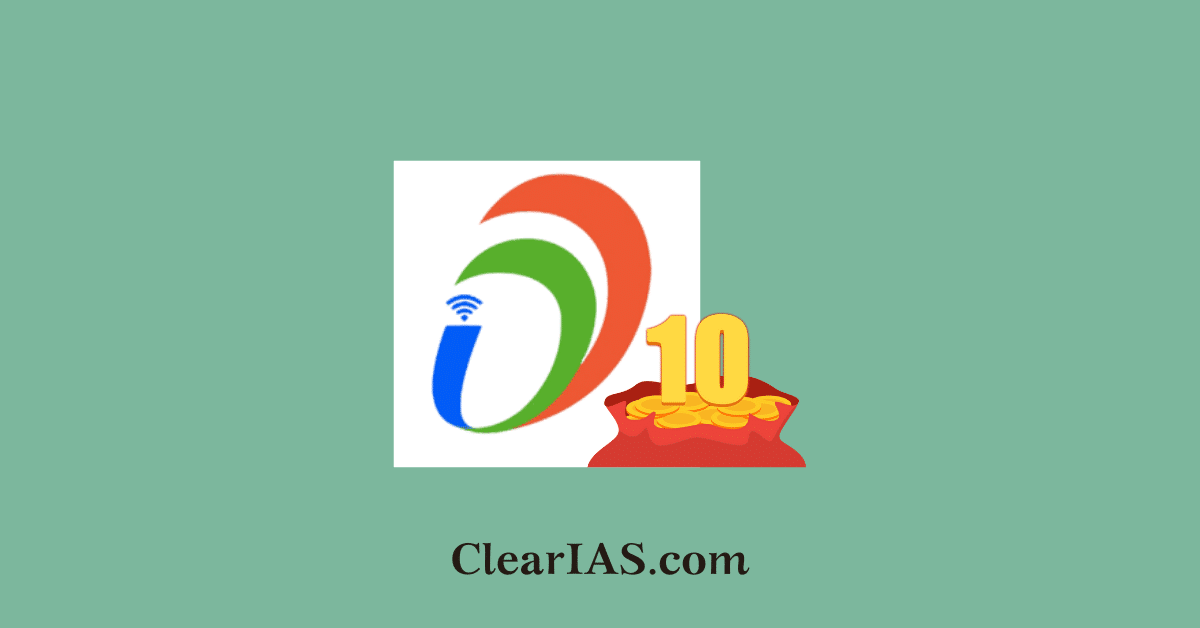
10 years of Digital India Mission: Launched in 2015, Digital India was envisioned as a transformational programme aimed at bridging the digital divide and enabling inclusive development through the use of technology. Read here to learn about the achievements of the Digital India mission’s decade.
Ten years later, Digital India Mission has grown beyond a government initiative into a people’s movement, reshaping the contours of governance, service delivery, commerce, and daily life across the country.
With milestones such as a surge in internet users from 250 million to over 970 million, ₹3.48 trillion saved through Direct Benefit Transfer, and 100+ billion transactions via UPI annually, the mission’s success is evident.
However, the path to global digital leadership requires deeper inclusivity, robust regulatory frameworks, and sustained innovation.
10 years of Digital India Mission
- Expansion of Digital Infrastructure
- Internet penetration increased significantly, with rural connectivity witnessing rapid improvement.
- Over 4 lakh Common Service Centres (CSCs) serve as digital bridges in remote areas, enabling access to government and commercial services.
- Digital infrastructure now forms the backbone of e-governance, financial inclusion, and digital public services.
- Financial Inclusion through Digital Payments
- Unified Payments Interface (UPI) has revolutionised India’s digital economy: In FY23, it handled ₹139 lakh crore worth of transactions, up from ₹1.09 lakh crore in FY18.
- UPI has also empowered MSMEs and vendors by offering them real-time, low-cost, secure payment mechanisms.
- Aadhaar and Direct Benefit Transfers (DBT)
- Aadhaar covers over 138 crore people, forming the core of the JAM Trinity (Jan Dhan, Aadhaar, Mobile).
- DBT has facilitated ₹44 trillion in welfare transfers, saving ₹3.48 trillion by plugging leakages.
- Digital Literacy and Empowerment
- The PMGDISHA programme has trained over 48 million rural citizens, and the government plans to expand this to 6 crore households.
- Women, SHG members, and youth have particularly benefited from the Digital India Mission, enabling them to participate in digital banking, education, and telemedicine.
- Harnessing Emerging Technologies
- Initiatives like IndiaAI Mission, MuleHunter.ai, and Vishvasya Blockchain Stack have accelerated AI and blockchain adoption.
- Applications include:
- PM-Kisan’s AI chatbot is helping over 5 lakh farmers track payments.
- Blockchain-based crop insurance, health records, and supply chains.
- Transparent E-Governance
- Platforms like UMANG, DigiLocker, and e-Sign have digitalized citizen-state interaction.
- Over 2,077 services on UMANG, used by 7+ crore people.
- Over 19 crore e-signatures issued.
- SVAMITVA scheme mapped 6.47 lakh villages, reducing land disputes and formalising ownership.
- Digital Health Infrastructure
- Platforms like eSanjeevani (38+ crore patients) and CoWIN revolutionised healthcare access and vaccine delivery.
- Ayushman Bharat Digital Health Mission aims to integrate 67 million health accounts, promoting continuity of care.
- Creation of Digital Public Infrastructure (DPI)
- India has built a globally admired DPI model using Aadhaar, UPI, and DigiLocker.
- Monthly Aadhaar authentications exceed 2 billion, driving seamless identity verification.
- Skilling for the Digital Economy
- Programs like FutureSkills Prime have equipped over 1 lakh IT professionals with skills in AI, IoT, and Blockchain.
- India now has the world’s third-largest startup ecosystem, with 180,000+ startups and projections of 65 million digital economy jobs by 2025.
- Digital Agriculture and Rural Transformation
- Initiatives like AgriStack and Krishi DSS use geospatial and AI tools to assist farmers in planning, disaster management, and market linkages.
- Digital platforms are now integral to agricultural policy execution.
Key Challenges in India’s Digital Ecosystem
- Urban-rural disparity persists: only 24% of rural households have internet access (NSSO), compared to 66% in urban areas.
- Women and marginalised communities face greater exclusion:
- Only 33% of Indian women have used the internet (NFHS 2019–21).
- Cybersecurity and Data Privacy
- India ranked 2nd globally in cyber attacks in 2024.
- Incidents of digital arrest scams, data theft, and identity fraud have surged.
- Lack of a comprehensive data protection law poses systemic risks.
- Fragmented Infrastructure and Interoperability
- State-level platforms vary widely in functionality and integration.
- Poor coordination between Aadhaar-based systems, state governance platforms, and sectoral apps limits service delivery.
- Low Digital Literacy and Skill Gaps
- Computer literacy rate stands at just 24.7% (NSS 78th round).
- The NSDC estimates a shortfall of 29 million digitally skilled workers in the next decade.
- Weak Regulatory Framework for Emerging Tech
- AI, IoT, and Blockchain lack clear regulatory guidance.
- India’s copyright law doesn’t address AI-generated content, stalling innovation.
- Ethical and legal challenges are growing with deepfakes, algorithmic bias, and misuse of generative AI.
- Vendor Lock-In and Public-Private Coordination
- Heavy dependence on private tech giants (e.g., for UIDAI systems) risks monopolies and data sovereignty issues.
- Lack of clarity on data ownership and exit strategies with vendors.
- Digital Exclusion of Marginalised Groups
- Tribals, SC/STs, and women in rural India still lack access to devices, connectivity, and training.
- Systemic barriers, such as language, education, and affordability, limit participation.
Measures to Enhance Digital Inclusion and Empowerment
- Nationwide Digital Literacy Mission
- Integrate digital education into school curricula.
- Provide free skill platforms for citizens of all ages.
- Tie digital literacy to welfare schemes to ensure uptake.
- Expand Infrastructure in Remote Areas
- Use satellite internet, community Wi-Fi, and low-cost broadband.
- Prioritise 5G rollouts in underserved regions through PPP models.
- Promote Localised, Multilingual Content
- Develop regional language apps, learning portals, and e-governance tools.
- Make government services accessible to non-English users.
- Public-Private Partnerships in Skill Development
- Encourage tech-financed training hubs in AI, cybersecurity, and cloud computing.
- Incentivise certifications, internships, and rural tech employment.
- Encourage Digital Startups for Local Problems
- Offer tax breaks, seed funding, and incubation to startups working in health, agriculture, education, etc.
- Launch a “Make Tech in India” campaign to support indigenous platforms.
- Robust Data Protection and Cybersecurity Laws
- Enact a comprehensive Digital India Act focusing on data protection, algorithmic transparency, and grievance redressal.
- Launch awareness campaigns on cyber hygiene and responsible digital behaviour.
- Strengthen Digital Health and Agriculture Platforms
- Integrate eSanjeevani, ABHA, and telemedicine into rural PHCs.
- Scale AI-based farm advisories and satellite-based crop monitoring.
- Unified Governance Portals
- Merge various services into a single digital dashboard for citizens.
- Promote interoperability and reduce paperwork and bureaucracy.
- Digital Hubs in Rural India
- Establish rural tech hubs with access to devices, training, and support.
- Link these with local SHGs, cooperatives, and small businesses.
Conclusion
The Digital India Mission has laid a robust foundation for a digitally inclusive society.
From enabling real-time governance to empowering farmers, citizens, and startups, India has emerged as a model for Digital Public Infrastructure (DPI) globally.
However, as we move from digital governance to global digital leadership, addressing digital exclusion, privacy, and skills gaps is crucial.
With the upcoming Digital India Act, the nation must ensure that technology uplifts every citizen, echoing the spirit that “the power of innovation lies in its ability to include, not exclude.”
Read: Digital Literacy: Kerala Achieves 100% digital literacy







Leave a Reply